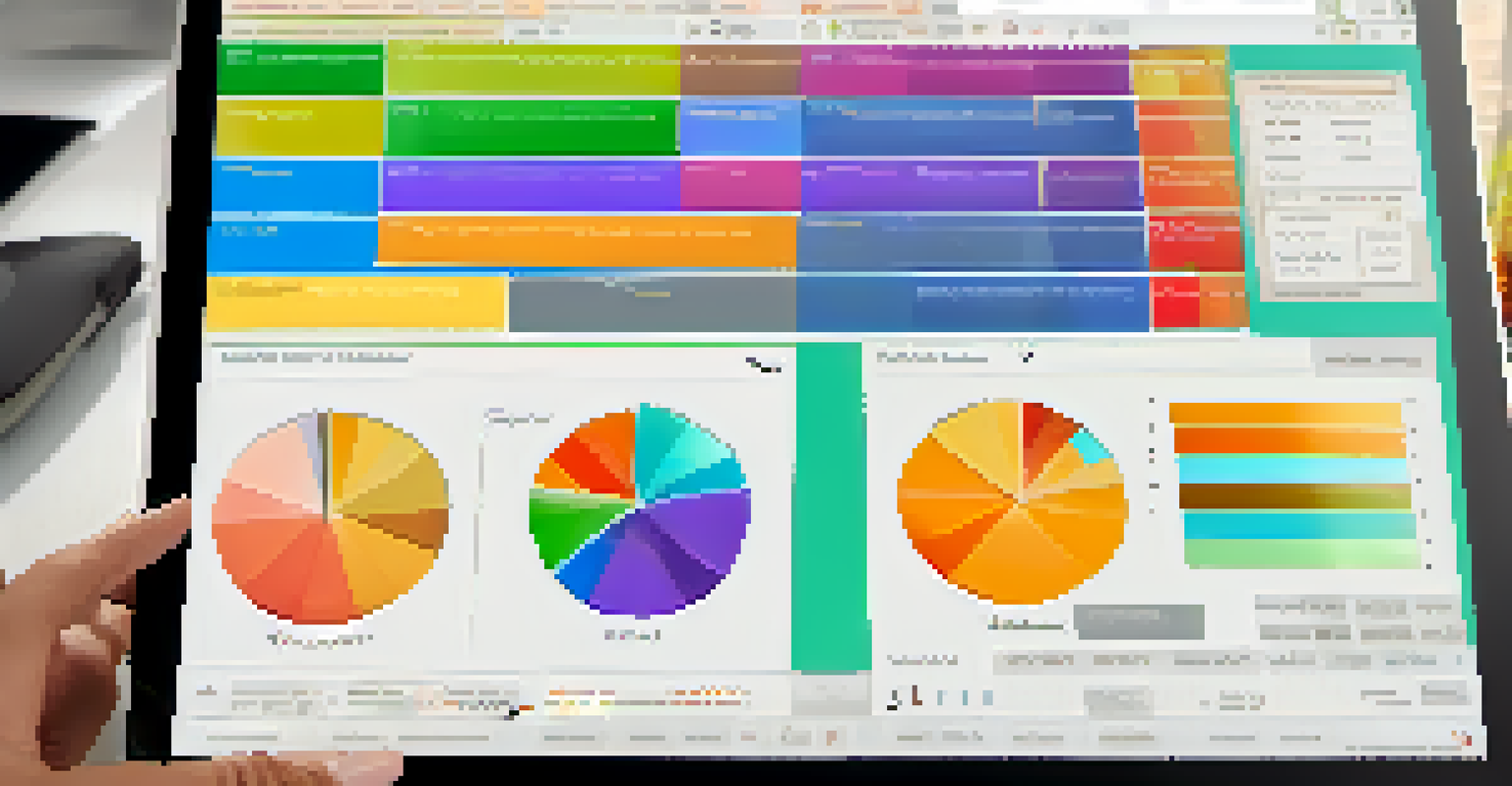Navigating Tax Software: Choosing the Right Tool for Filing

Understanding Your Tax Filing Needs
Before diving into the world of tax software, it's crucial to assess your specific tax situation. Are you a freelancer with multiple income streams, or perhaps a homeowner with various deductions? Knowing your unique circumstances will guide you in selecting a tool that fits your requirements.
The only thing certain in life is death and taxes.
For instance, if you're self-employed, you might need software that offers robust deduction tracking. On the other hand, if you're a student with a simple tax return, a basic tool could suffice. Understanding these nuances is the first step toward a smoother filing process.
Ultimately, your needs shape your search. Take the time to outline your tax profile, as this will streamline your decision-making and help you avoid the overwhelm that often accompanies tax season.
Key Features to Look for in Tax Software
When exploring tax software, certain features can make a significant difference in your filing experience. Look for user-friendly interfaces, step-by-step guidance, and the ability to import previous returns. These elements can simplify the process and minimize mistakes.

Additionally, consider software that offers live support or chat options. Having access to real-time assistance can be invaluable, especially if you have questions while navigating complex sections of your return. This support can save you time and stress.
Assess Your Tax Needs First
Understanding your unique tax situation helps in selecting the right software for a smoother filing process.
Lastly, ensure that the software supports e-filing, as this can expedite your return process significantly. The right features not only enhance usability but also ensure a more efficient and accurate filing experience.
Comparing Pricing Options and Value
Tax software comes in various price ranges, so it's essential to compare your options. Some programs offer free versions for simple returns, while others charge a fee for advanced features. Be sure to evaluate what you get for your money.
In this world, nothing can be said to be certain, except death and taxes.
For example, a higher-priced software might include features like live audit assistance or a dedicated tax professional review. If you have a more complicated return, investing in a premium option may save you money in the long run by ensuring you claim all available deductions.
Always read user reviews and testimonials to gauge whether the pricing aligns with the value offered. This way, you can make an informed decision that fits your budget and needs.
Evaluating Security Features in Tax Software
In today's digital age, safeguarding your personal and financial information is paramount. When selecting tax software, prioritize security features such as encryption and two-factor authentication. These measures protect your sensitive data from cyber threats.
For instance, look for software that complies with IRS regulations regarding data protection. A trustworthy provider will clearly communicate their security protocols and how they safeguard your information throughout the filing process.
Prioritize Security Measures
Choosing tax software with strong security features is essential to protect your personal and financial information.
You can also check for third-party security certifications, as these serve as an additional layer of reassurance. Prioritizing security helps ensure that your tax filing experience is not only efficient but also safe.
User Experience: Read Reviews and Testimonials
Before settling on a tax software option, take some time to read user reviews and testimonials. Real-life experiences can provide valuable insights into the software's usability and effectiveness. Look for feedback on customer service, ease of use, and overall satisfaction.
For example, a user might highlight how intuitive the interface is or share concerns about the responsiveness of customer support. This information can help you gauge whether a particular software will meet your expectations and needs.
By doing your homework and considering feedback from other users, you can make a more informed decision. It’s like asking a friend for recommendations before making a purchase—you want to know what you’re getting into.
Trial Versions: Test Before You Commit
Many tax software providers offer free trial versions, which can be a fantastic way to test the waters before committing. These trials allow you to explore the features and interface without the pressure of a financial commitment. Take advantage of these options to find the software that feels right for you.
During the trial, pay attention to how intuitive the navigation feels and whether the tool provides adequate support. This hands-on experience can be critical in determining if the software aligns with your filing style and comfort level.
Utilize Trial Versions Wisely
Testing free trial versions of tax software can help you find a tool that aligns with your filing style and needs.
Ultimately, using a trial version can save you time and frustration by ensuring you choose a software that genuinely fits your needs. It’s all about finding the best match for your tax filing journey.
Staying Updated: Tax Software and Changes in Law
Tax laws can change frequently, which makes it essential to choose software that stays current with these updates. A reliable tax tool should automatically incorporate the latest tax regulations and forms, ensuring you comply and maximize your deductions.
For example, if new tax credits or deductions are introduced, quality software will adjust its algorithms to reflect these changes. This feature is especially important during an election year or after significant legislation passes.

By selecting software that prioritizes updates, you can be confident that you're filing accurately and taking advantage of all available benefits. Keeping informed about these changes can lead to significant savings and peace of mind.